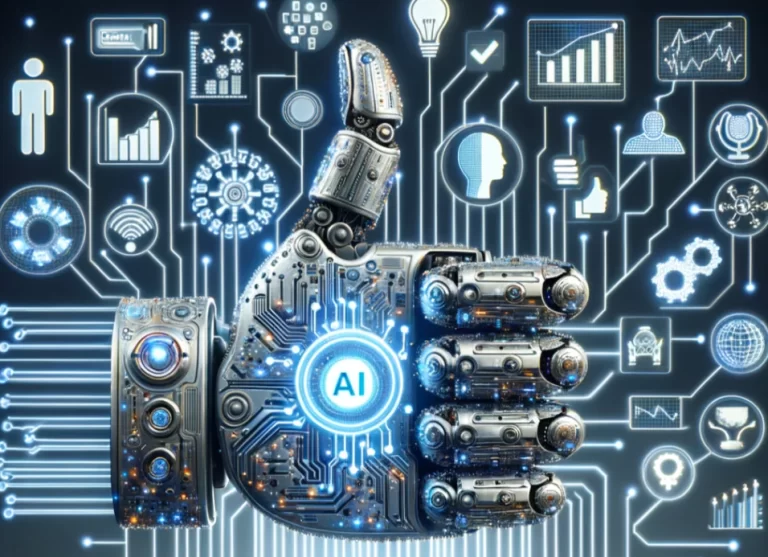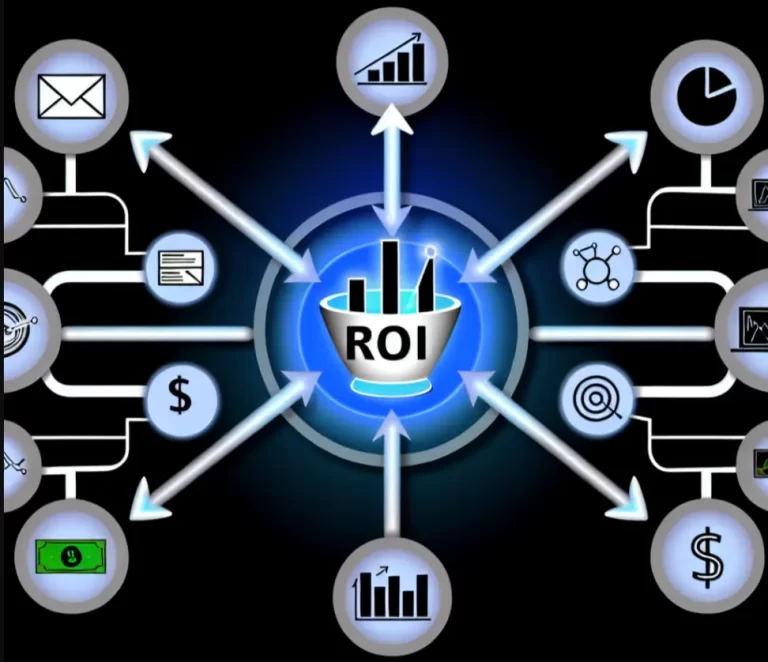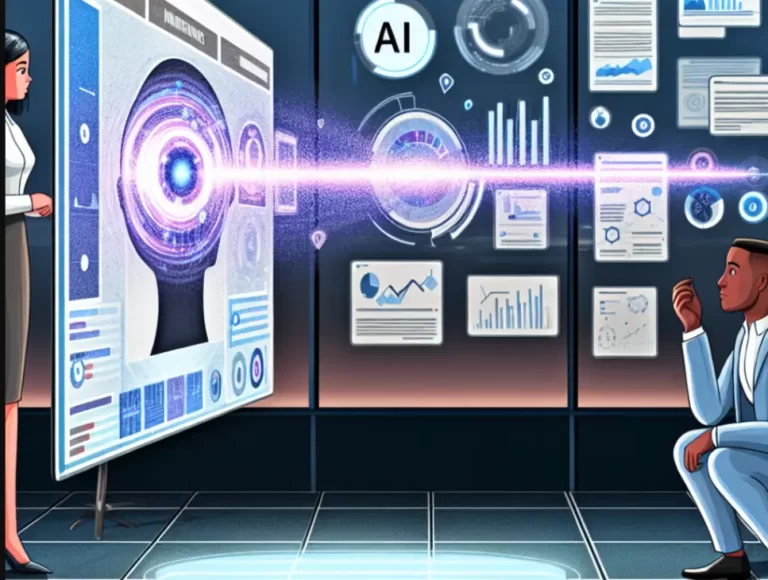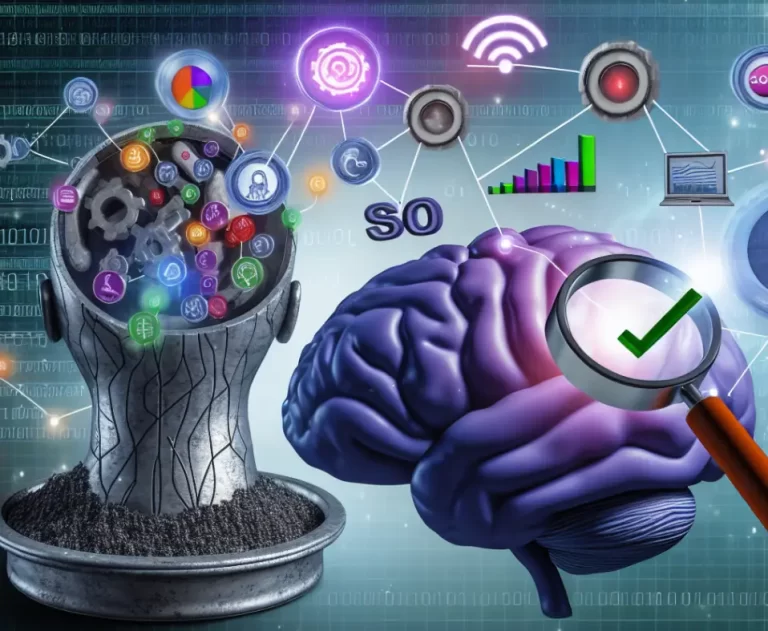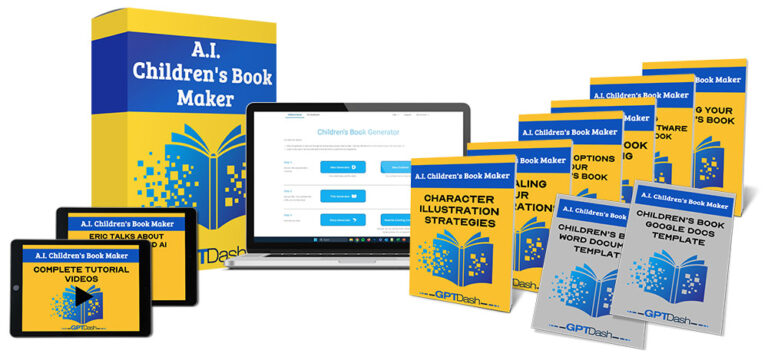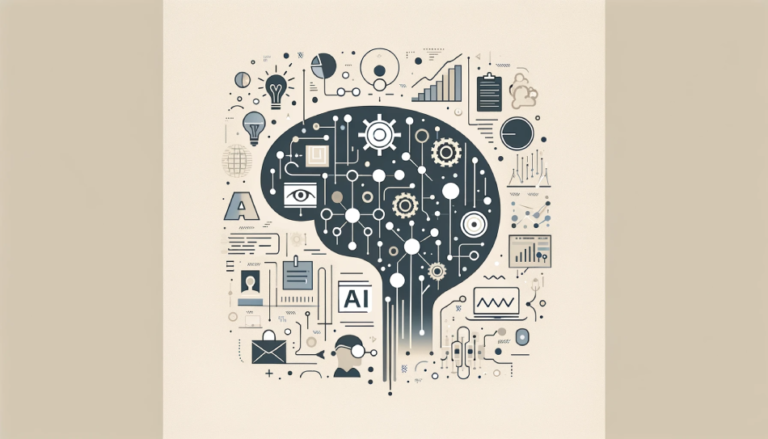AI Automation: Transforming Business Workflows
Welcome to the era of artificial intelligence (AI), where technology isn’t just a tool but a partner in driving business success. AI automation is revolutionizing how companies operate, offering a blend of efficiency, precision, and innovation that was previously unimaginable. Let’s dive into what AI automation really means for your business and why it’s creating such a buzz in the corporate world.
What is AI Automation?
At its core, AI automation involves using advanced algorithms and machine learning techniques to perform tasks that usually require human intelligence. These tasks can range from data analysis and customer service to inventory management and even complex decision-making processes. By integrating AI into your business workflows, you can automate repetitive tasks, freeing up your team to focus on more strategic initiatives.
Why is AI Automation Important?
Imagine having a tireless assistant that works 24/7, never makes mistakes, and continuously learns to improve its performance. That’s the promise of AI automation. It’s not just about doing things faster; it’s about doing them better and smarter. Businesses that leverage AI automation can gain a significant competitive edge by enhancing productivity, reducing operational costs, and delivering exceptional customer experiences.
The Role of AI in Modern Business
Today’s business environment is fast-paced and highly competitive. To stay ahead, companies need to be agile, data-driven, and customer-centric. AI automation fits perfectly into this equation by enabling businesses to:
- Make data-driven decisions: AI tools can analyze vast amounts of data quickly and accurately, providing insights that inform strategic decisions.
- Enhance customer interactions: From chatbots to personalized recommendations, AI can elevate the customer experience to new heights.
- Streamline operations: By automating mundane tasks, businesses can focus more on innovation and growth.
Real-World Impact
Consider global giants like Amazon and Netflix. Their success is largely attributed to their use of AI automation. Amazon uses AI for everything from warehouse management to personalized shopping experiences, while Netflix leverages it to recommend content tailored to individual preferences. These examples illustrate the transformative power of AI automation across different sectors.
Getting Started with AI Automation
Dipping your toes into the world of AI might seem daunting, but it doesn’t have to be. Start by identifying tasks within your business that are repetitive and time-consuming. These are prime candidates for automation. Next, explore AI tools and platforms that suit your needs. Many solutions are designed to be user-friendly, even for those without a technical background. Lastly, don’t hesitate to seek expert advice or partner with AI consultants to ensure a smooth implementation process.
To sum it up, AI automation is not just the future; it’s the present. Embracing this technology can transform your business operations, making them more efficient, effective, and innovative. So, are you ready to take the leap into AI automation and unlock new levels of success for your business?

The Evolution of Business Workflows
Picture this: It’s the 1980s, and businesses are bustling with employees typing away on typewriters, filing cabinets packed to the brim with paper documents, and telephones ringing off the hook. Fast forward to today, and the landscape of business workflows has transformed beyond recognition. The driving force behind this monumental shift? Technology. And more recently, the powerful influence of Artificial Intelligence (AI).
Early Days: Manual Processes
In the early days, business workflows were manual and often tedious. Employees spent countless hours on repetitive tasks such as data entry, filing, and basic computation. These tasks were not only time-consuming but also prone to human error. Monthly reports took days to compile, and collaboration meant physical meetings and exchanging paper documents.
The Advent of Computers and the Internet
The introduction of computers in the workplace marked the beginning of a significant transformation. Suddenly, tasks like word processing, spreadsheets, and database management became more efficient. The Internet further revolutionized business workflows, making information sharing and communication faster and more reliable. Email replaced snail mail, and corporate websites began to emerge, bringing new opportunities for marketing and customer engagement.
The Rise of Business Software
With the advent of enterprise software solutions, companies started to embrace automation in their workflows. Tools like Customer Relationship Management (CRM) systems, Enterprise Resource Planning (ERP) software, and project management platforms began to simplify and streamline complex processes. These tools allowed businesses to manage their operations more effectively, track progress in real-time, and make data-driven decisions.
Entry of Artificial Intelligence
Now, enter AI. This technology is taking automation to unprecedented heights. AI can analyze vast amounts of data far more quickly and accurately than any human, predict trends, and even make autonomous decisions. AI-driven tools are capable of learning from interactions, improving over time, and suggesting optimal solutions. This has led to a new era of intelligent automation that goes beyond mere efficiency and accuracy.
Impact on Modern Workflows
Modern business workflows are highly dynamic and interconnected, thanks to AI. Whether it’s automating customer service through chatbots, optimizing supply chains with predictive analytics, or personalizing marketing efforts, AI is at the core of these advancements. The implementation of AI-driven tools is helping businesses to be more agile, responsive, and customer-centric.
Continuous Evolution
But, it doesn’t stop here. The evolution of business workflows is an ongoing process. As AI technology continues to advance, so will the ways in which businesses operate. The integration of AI with other emerging technologies like the Internet of Things (IoT), Blockchain, and Augmented Reality (AR) promises even more transformative changes on the horizon.
Conclusion
From manual processes to the intelligent systems we see today, the evolution of business workflows is a testament to the incredible progress driven by technology. By embracing these advancements, businesses can not only enhance their operational efficiency but also gain a competitive edge in a rapidly changing market. The journey is far from over, and the future holds exciting possibilities for those ready to innovate and adapt.
Key Benefits of AI Automation
Artificial Intelligence (AI) is revolutionizing the way businesses operate, and AI automation is at the forefront of this transformative wave. From small startups to sprawling conglomerates, companies are leveraging AI to streamline their processes, boost productivity, and enhance decision-making. But what are the concrete benefits of integrating AI automation into your business? Let’s dive in!
1. Increased Efficiency and Productivity
One of the most significant advantages of AI automation is its ability to drastically improve efficiency and productivity. By automating repetitive, time-consuming tasks, employees can focus on more strategic and creative aspects of their jobs.
- Speed and Accuracy: AI systems can perform tasks at a much faster rate than humans without sacrificing accuracy. This ensures that work gets done quickly and correctly, reducing the margin for error.
- 24/7 Operations: Unlike humans, AI doesn’t need breaks, holidays, or sleep. This means that automated processes can run around the clock, ensuring that business operations are continuous.
2. Cost Savings
Implementing AI automation can lead to significant cost reductions. While there might be an initial investment, the long-term savings often outweigh these initial costs.
- Reduced Labor Costs: Automating routine tasks can reduce the need for large teams, leading to savings on salaries and benefits.
- Minimized Errors: Human errors can be costly. AI automation ensures high accuracy, reducing the expenses associated with correcting mistakes.
3. Enhanced Customer Experience
AI automation can significantly elevate the customer experience, which is crucial for retaining clients and fostering loyalty.
- Personalized Interactions: AI can analyze customer data to offer personalized recommendations and interactions, making each customer feel valued and understood.
- Faster Response Times: Chatbots and virtual assistants powered by AI can handle customer inquiries promptly, ensuring that customers get the information they need quickly.
4. Improved Decision-Making
AI automation isn’t just about handling tasks; it’s also a powerful tool for making informed decisions.
- Data Analysis: AI can analyze vast amounts of data quickly, providing actionable insights that help businesses make smarter decisions.
- Predictive Analytics: AI can forecast trends and behaviors, allowing businesses to anticipate market changes and adjust their strategies accordingly.
5. Scalability
As businesses grow, so do their operational needs. AI automation provides the scalability required to handle increased workloads without compromising on performance.
- Flexible Solutions: AI solutions can be easily scaled up or down depending on the business’s needs, ensuring that operations remain smooth during periods of growth or contraction.
- Consistent Performance: Regardless of scale, AI maintains consistent performance levels, ensuring reliability and efficiency.
In conclusion, the benefits of AI automation are transformative, offering increased efficiency, cost savings, enhanced customer experiences, improved decision-making, and unmatched scalability. By embracing AI automation, businesses can stay competitive, innovate continually, and achieve sustainable growth. If you’re considering AI automation for your business, it’s clear that the potential rewards are well worth the investment.
Real-World Applications of AI in Business Processes
Hey there! Have you ever wondered how AI is transforming the way businesses operate on a day-to-day basis? The integration of AI into business processes is not just a futuristic concept anymore; it’s happening right now! Let’s dive into some real-world applications where AI is making a significant impact.
Customer Service Chatbots
One of the most visible applications of AI in businesses today is the use of chatbots for customer service. These AI-driven conversational agents are available 24/7 to handle customer inquiries, resolve issues, and provide information. Imagine having a personal assistant that never sleeps! This not only enhances customer satisfaction but also frees up human employees to focus on more complex tasks that require a human touch.
Predictive Analytics
Have you ever wondered how companies seem to know exactly what you need before you realize it yourself? That’s the magic of predictive analytics. Businesses are using AI to analyze vast amounts of data and predict future trends, customer behaviors, and market demands. From retail giants forecasting inventory needs to financial institutions identifying credit risks, predictive analytics is a game-changer.
Process Automation
Let’s be honest: no one enjoys doing repetitive, mundane tasks. Enter Robotic Process Automation (RPA). RPA uses AI to automate routine business processes such as data entry, invoice processing, and payroll management. This means fewer errors, faster completion times, and more time for employees to engage in creative and strategic endeavors.
Personalized Marketing
Ever received an email recommending a product you were just thinking about? That’s AI-driven personalized marketing at work. By analyzing user data, AI can create personalized marketing campaigns that target individual preferences and behaviors. This increases the chances of conversion and customer loyalty. It’s like having a marketer who knows each customer personally!
Supply Chain Optimization
Managing a supply chain can be a logistical nightmare, but AI is here to help. Companies are leveraging AI to optimize everything from inventory levels to delivery routes. With AI, businesses can predict supply chain disruptions, streamline operations, and reduce costs. This ensures that products are delivered on time, every time.
Fraud Detection
In the age of digital transactions, security is paramount. AI is enhancing fraud detection systems by identifying unusual patterns and behaviors in real-time. Financial institutions, e-commerce platforms, and even government agencies are using AI to detect and prevent fraudulent activities. This not only protects the business but also ensures customer trust and safety.
Human Resources Management
AI is revolutionizing human resources by automating tasks such as resume screening, employee onboarding, and performance evaluations. AI-driven systems can analyze vast amounts of data to identify the best candidates, predict employee turnover, and even suggest personalized training programs. This creates a more efficient and effective HR department, leading to a happier and more productive workforce.
As you can see, AI is not just a buzzword; it’s a powerful tool that’s reshaping various aspects of business operations. From enhancing customer experiences to optimizing internal processes, AI is making businesses smarter, faster, and more efficient. So, the next time you interact with a chatbot or receive a personalized marketing email, you’ll know that AI is working behind the scenes to make your experience seamless and enjoyable.
Overcoming Challenges in AI Implementation
Embarking on the journey to integrate AI automation into your business can feel a bit like setting off on an uncharted adventure. But worry not! While there are certainly challenges along the way, they’re far from insurmountable. With the right strategies and mindset, you can navigate these hurdles and set your business up for a successful AI transformation. Let’s dive into some common obstacles and how to overcome them.
Understanding the Tech
One of the first hurdles many businesses encounter is simply grasping the technology itself. AI can seem like an enigmatic black box, but you don’t need a PhD in computer science to harness its power. Start with the basics—familiarize yourself with key concepts like machine learning, natural language processing, and neural networks. There are plenty of resources available, from online courses to webinars. Understanding the fundamental principles will give you a solid foundation to build upon.
Data Quality and Quantity
AI thrives on data, but the quality of that data can make or break your implementation. It’s essential to ensure your data is accurate, relevant, and comprehensive. Begin by conducting a data audit to identify gaps and inconsistencies. Collaborate with data scientists to clean and organize your datasets. Remember, a robust data strategy is the backbone of any successful AI project.
Skill Gaps in the Workforce
Another significant challenge is the skill gap within your team. Not everyone will be well-versed in AI technologies, and that’s okay. Invest in training and development programs to upskill your current employees. Encourage a culture of continuous learning where team members feel empowered to acquire new skills. If necessary, consider bringing in external expertise—AI consultants can provide invaluable insights and guidance.
Cost and ROI Concerns
AI implementation can be a substantial investment, and it’s natural to have concerns about costs and return on investment (ROI). To address this, start with a clear AI strategy that aligns with your business goals. Identify specific, measurable objectives and set realistic timelines. Begin with small, manageable projects that can demonstrate quick wins and tangible benefits. This approach not only helps to manage costs but also builds confidence in the technology’s potential.
Change Management and Buy-In
Introducing AI automation often means significant changes to existing workflows and processes. This can sometimes lead to resistance from employees who are comfortable with the status quo. Effective change management is crucial to smooth the transition. Communicate openly about the benefits of AI and how it will enhance, rather than replace, human roles. Involve employees in the implementation process and seek their feedback. Creating a sense of ownership can go a long way toward securing buy-in.
Ethical and Regulatory Considerations
As AI technology advances, so do concerns about ethics and compliance. It’s essential to stay informed about relevant regulations and ensure your AI applications are transparent, fair, and ethical. Develop a framework for ethical AI use within your organization. This could include guidelines on data privacy, algorithmic fairness, and accountability. Being proactive in these areas not only mitigates risks but also builds trust with your stakeholders.
Continuous Monitoring and Improvement
AI implementation isn’t a set-it-and-forget-it endeavor. Continuous monitoring and improvement are key to long-term success. Regularly evaluate the performance of your AI systems and make adjustments as needed. Stay updated on emerging AI trends and advancements to keep your technology stack current. Remember, AI is a rapidly evolving field, and staying agile will help you maintain a competitive edge.
By addressing these challenges head-on and adopting a strategic, informed approach, you can unlock the transformative potential of AI automation for your business. The path may have its bumps, but the rewards are well worth the effort.
Future Trends in AI Automation for Businesses
AI automation is no longer a futuristic concept but a present-day reality transforming businesses across the globe. As we look ahead, several exciting trends are poised to shape the way companies leverage AI for streamlined operations and enhanced productivity. Let’s dive into these emerging trends and see how they could redefine the business landscape.
1. Hyper-Automation
Imagine automating not just isolated tasks but entire workflows with minimal human intervention. Hyper-automation is about leveraging multiple AI technologies to automate more complex processes end-to-end. From data entry to customer service, hyper-automation aims to create a seamless, intelligent system that learns and improves over time.
2. AI-Driven Decision Making
The days of relying solely on human intuition for critical business decisions are waning. AI is stepping up to offer data-driven insights that can predict market trends, customer preferences, and operational inefficiencies. Tools like predictive analytics and machine learning models will become integral in guiding strategic choices, reducing risks, and maximizing outcomes.
3. Enhanced Customer Experience
Customer expectations are soaring, and businesses must keep up. AI-powered chatbots, virtual assistants, and personalized marketing are just the tip of the iceberg. Future trends point towards more sophisticated AI systems that can understand and anticipate customer needs, offering tailor-made solutions and creating deeper, more meaningful interactions.
4. Integration of AI with IoT
The Internet of Things (IoT) is expanding, and when combined with AI, it opens up a world of possibilities. From smart factories to intelligent supply chains, the integration of AI with IoT will lead to systems that are more efficient, responsive, and resilient. These smart ecosystems will enable businesses to monitor, analyze, and optimize operations in real-time.
5. Evolution of Natural Language Processing (NLP)
NLP has made significant strides, but its future looks even brighter. We can expect more advanced language models that can understand context, tone, and nuances to a greater degree. This will revolutionize how businesses interact with customers and manage internal communications, making interactions more natural and effective.
6. AI Ethics and Transparency
As AI becomes more embedded in business operations, issues of ethics and transparency will take center stage. Companies will need to focus on creating ethical AI systems that are transparent and fair. This includes addressing biases in AI algorithms, ensuring data privacy, and being transparent about AI decision-making processes.
7. Democratization of AI
Currently, AI adoption is often limited to large enterprises with significant resources. However, the future trend is towards the democratization of AI, making it accessible to small and medium-sized businesses. With more affordable and user-friendly AI tools, even startups can harness the power of AI to drive growth and innovation.
Conclusion
The future of AI automation in business is not just about technology; it’s about creating smarter, more agile organizations capable of thriving in a rapidly changing world. By staying abreast of these trends, businesses can position themselves at the forefront of innovation, unlocking new opportunities and achieving greater competitive advantage.
So, if you’re considering diving into AI automation, there’s no better time than now to start exploring these exciting trends. The future is here, and it’s brimming with possibilities.
How to Get Started with AI Automation in Your Business
Feeling the buzz around AI automation and wondering how to jump on the bandwagon? You’re in the right place! Transitioning to AI automation can seem daunting, but with a strategic approach, it can be an incredibly smooth and rewarding process. Let’s break it down step-by-step.
1. Identify Your Needs
First things first, pinpoint the specific areas in your business that could benefit from automation. Is it customer service, data analysis, or perhaps inventory management? Understanding your pain points and goals will help you choose the right tools and set the foundation for your AI journey.
Pro Tip: Talk to your team members and get their input on repetitive tasks that drain their time and energy. This collaboration can provide valuable insights and foster a sense of ownership in the transition process.
2. Research and Select the Right Tools
With your needs identified, it’s time to dive into research. There are a plethora of AI tools available, each tailored to different aspects of business operations. Look for software that aligns with your objectives and has a track record of reliability and support.
Research Checklist:
- Compare features and pricing of various solutions
- Read user reviews and case studies
- Check for scalability to ensure the tool grows with your business
- Consider integration capabilities with your existing systems
3. Start Small and Scale Gradually
Diving headfirst into full-scale automation can be overwhelming. Instead, begin with a pilot project. Choose a single process to automate and monitor the results closely. This approach will help you understand the nuances of AI implementation and make necessary adjustments without significant risk.
Example: You might start by automating your email marketing campaigns. Once you see the benefits, you can gradually expand to other areas like customer support or HR processes.
4. Invest in Training and Support
AI tools are powerful, but they’re only as effective as the people using them. Investing in training for your team is crucial. Make sure they understand how to use the new tools and are comfortable with the transition. Many AI solution providers offer training sessions and resources—take full advantage of these offerings.
Remember: A well-trained team will be more confident and efficient, ensuring a smoother transition and better results.
5. Monitor and Optimize
Once your AI tools are up and running, the work isn’t over. Continuous monitoring is essential to ensure everything operates as expected. Regularly review the performance metrics and gather feedback from your team to identify areas for improvement.
Optimization Tips:
- Set clear KPIs to measure the success of your AI implementation
- Conduct regular performance reviews and adjust strategies as needed
- Stay updated with the latest AI trends and advancements to keep your systems current
6. Foster a Culture of Innovation
Finally, cultivating an environment that embraces technological change is key to long-term success. Encourage your team to explore new ways AI can enhance their work and keep an open dialogue about the automation process. A culture that values innovation will continuously seek out and leverage new AI opportunities, driving your business forward.
By following these steps, you’ll be well on your way to harnessing the power of AI automation in your business. It may seem like a big leap, but with a thoughtful approach, you’ll find it can transform your operations and unlock new levels of productivity and growth. Ready to take the plunge? Let’s get started!



